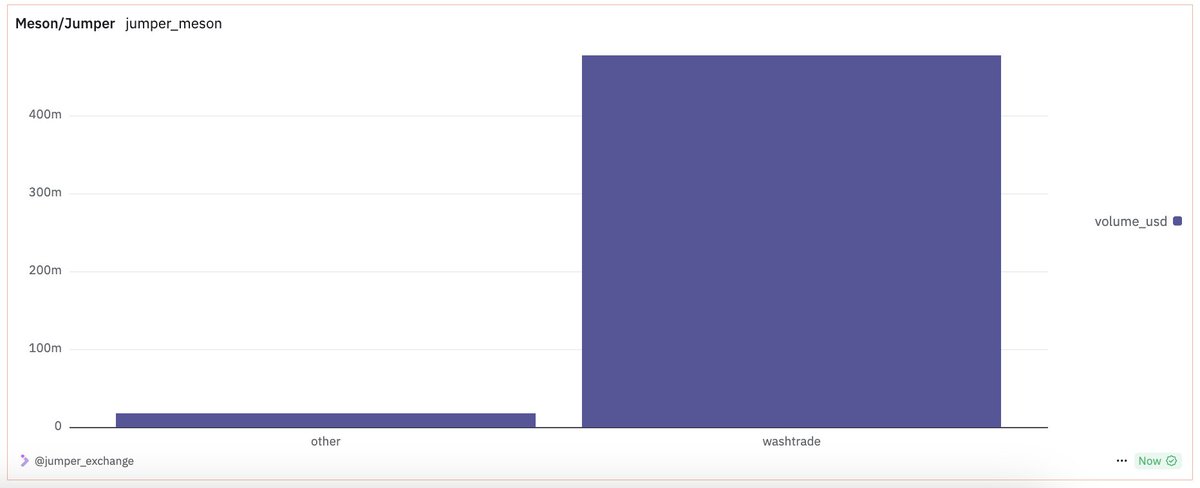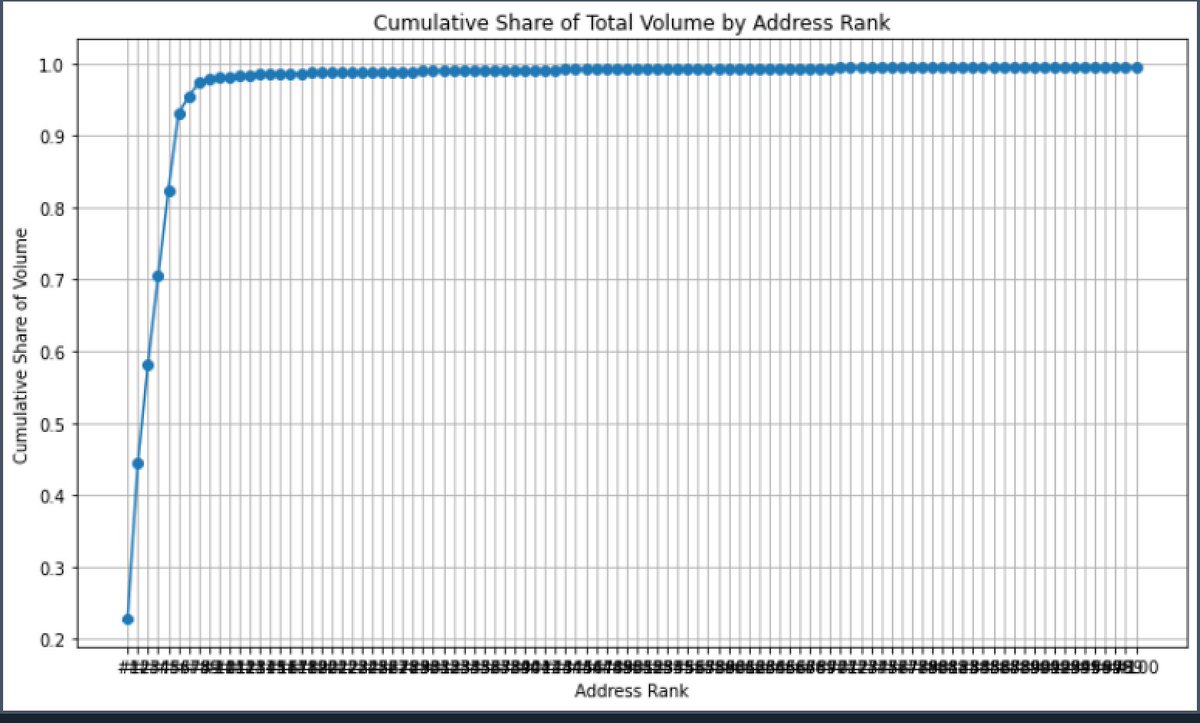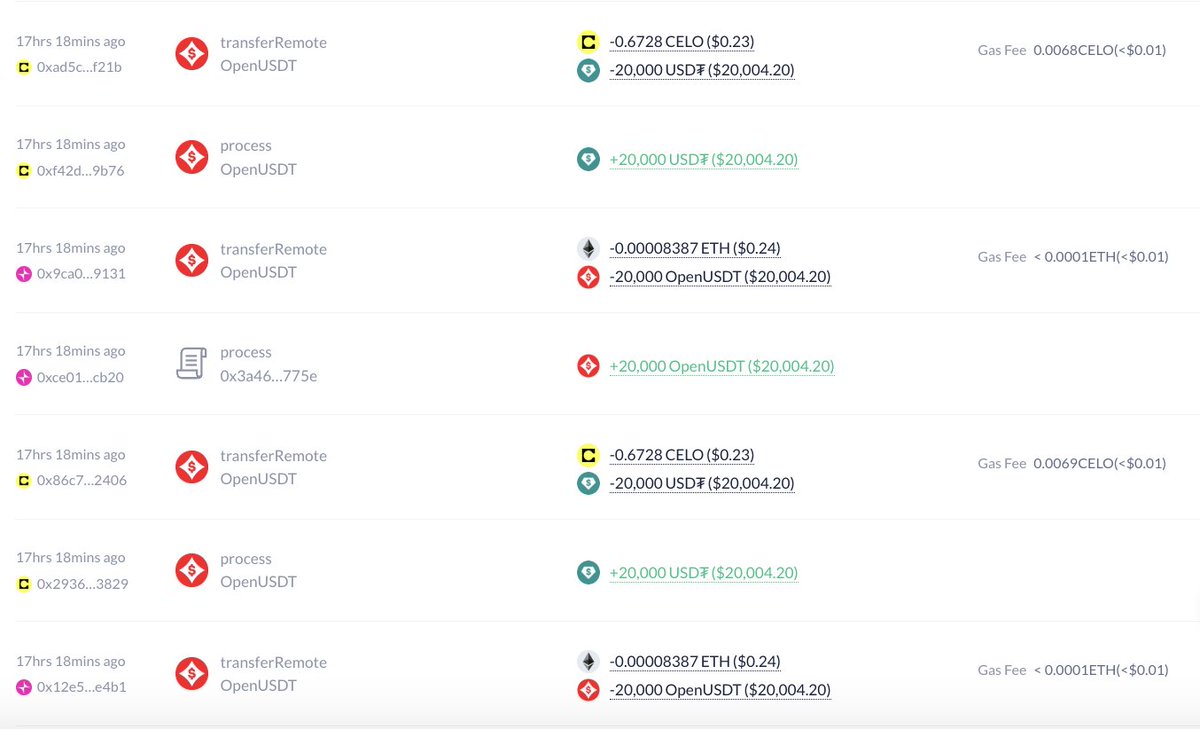Bridges onchain volume is a great metric but it should not be taken for granted.
A few month ago, I shared how a few addresses amplified Orbiter volume with non-organic usage:
There is a similar situation with two other bridge providers appearing on the top of the @DefiLlama bridge page
1- First case on @mesonfinance
90% of their bridge volume is from two addresses doing back-and-forth transactions between Arbitrum and BSC.
Those addresses are sending each other 0.5 or 1 BTC approx. 500 times per day resulting in $30m of daily volume. This does not seem to relate to any kind of organic rebalancing activity.
On Arbitrum:
On BSC:
In May alone we count $450m of volume done from the two addresses and only $18m from any other addresses ($18m).
2- Second case on @hyperlane:
Described by @PrimordialAA in this tweet:
This address-0x1eeaaf572d1dd107054bedb65e1bdf05556a43ae-
is doing back and forth $20,000 transactions with
USDT on Celo and openUSDT on Unichain approximately 2500 times per day resulting in $40-50m of daily volume in the last few days
Overall, among the 6700 addresses that have used Hyperlane in the last 9 days, 6 (0.09%) represents 93% of the volume.
The one above is #6. #3, #4, #5 presents similarities in activity (0x734ada6c042f97f4780468383085a4e3f527bb08, 0x6a688e505720eb06857aa6e7ce31afad7bf51afb, 0x2deee85bc05055b070515f041148384d3d1dd49a)
#1 and #2 (0xbba1938ff861c77ea1687225b9c33554379ef327, 0x4a8149b1b9e0122941a69d01d23eae6bd1441b4f)
seems to be linked to openUSDT protocol ( and also same back and forth patterns than the other 4 - even if the activity seems to have changed in the last few days from $20,000 transactions to more random amounts.
3 - Conclusion
Always question volume data even on a chad website like DeFillama and question even more when there is a large variation/increase of this volume.
I do not think that the protocol themselves controls those addresses. However advertising volume growth while knowing about those limitations does not help creating trust.
@DefiLlama in order to improve checking if the volume is legit, I propose two things.
Creating a volume concentration ratio i.e. how many addresses and the proportion in terms of total addresses that are responsible for 50% and 90% of the protocol's volume. The smaller the number of addresses and proportion (i.e. below 0.1% and 1%), the more likely the volume is inorganic.
Something harder to do -> looking at the pattern of volume and number of transactions for addresses with the more various number of transactions and the biggest volume.
If a lot of addresses are sharing the same stats it is likely a farming strategy and volume is non-organic. This is what we unveiled with @Orbiter_Finance.



30
4.25K
The content on this page is provided by third parties. Unless otherwise stated, OKX is not the author of the cited article(s) and does not claim any copyright in the materials. The content is provided for informational purposes only and does not represent the views of OKX. It is not intended to be an endorsement of any kind and should not be considered investment advice or a solicitation to buy or sell digital assets. To the extent generative AI is utilized to provide summaries or other information, such AI generated content may be inaccurate or inconsistent. Please read the linked article for more details and information. OKX is not responsible for content hosted on third party sites. Digital asset holdings, including stablecoins and NFTs, involve a high degree of risk and can fluctuate greatly. You should carefully consider whether trading or holding digital assets is suitable for you in light of your financial condition.


